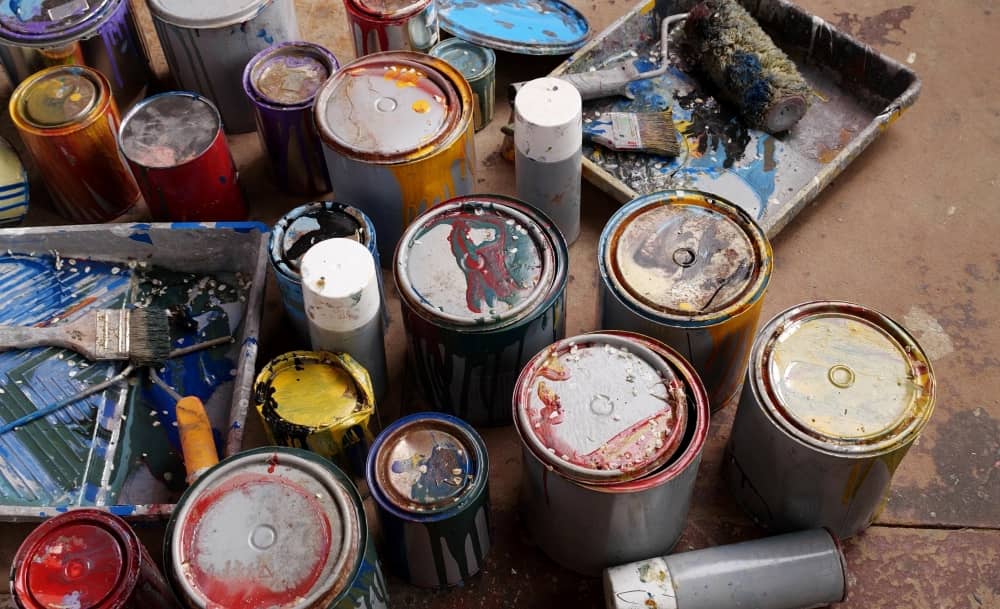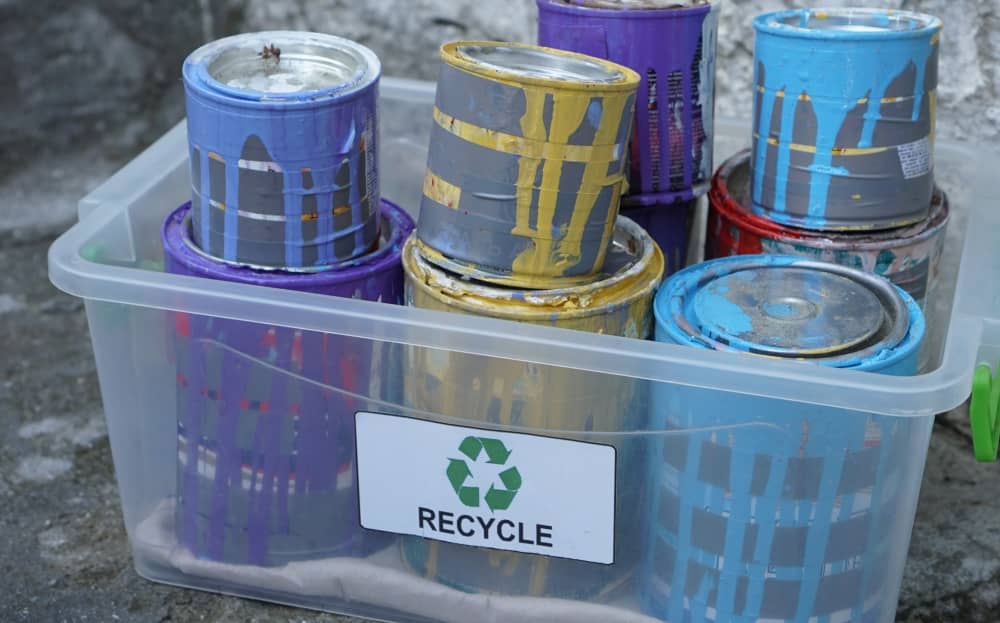
Paints and solvents are great innovations that serve many industries and are used for a variety of applications. Paints are typically used in the construction industry to paint walls, doors, and other elements. Aside from enhancing and altering the appearance of surfaces, using paint tin also protects the surface from damage.
Whilst paints are generally for coating and colouring, solvents play a crucial role when it comes to the formulation of paints. They are added to dissolve binders, resins, and pigments. With solvents, you can get your desired paint consistency and viscosity, among others.
Once you’re done with your painting project, what should you do with the leftover paint and solvent? Do you know the correct way to dispose of these products?
Why It is Important to Use Safe Disposal Methods
Many of us have used paints, but some may not be aware of the best paint and solvent disposal methods. As with any waste, correct disposal is a must to protect the environment and the population’s health.
Remember that paints and solvents contain hazardous chemicals, which can harm us and the planet if handled and disposed of improperly. Latex or water-based epoxy paints may:
- Pollute waterways
- Decrease water clarity, which further affects plant photosynthesis
- Reduce water’s oxygen levels
- Threaten the lives of aquatic organisms
Oil-based paint or solvents can also have a massive impact on the environment, including:
- Oxygen deprivation in fish and water-dwelling plants
- Tumour formation in fish and other animals
- Sediment contamination
- Food chain poisoning that eventually affects humans
You should purchase paint based on an accurate estimation of your needs. This will help avoid unnecessary waste and shortage because you have the appropriate quantity at hand.
Also, be sure to store paint properly in a cool, dark place so it does not dry up. Place it on a shelf and not on the floor to prevent moisture build-up that can rust the paint can. But even if you have stored paints properly, it’s essential to understand that they have an expiration date. If opened and used, paint can still be reused for the next two to five years. However, if it smells rancid, it has gone bad and may need to be thrown away.
Safe Disposal Methods for Paints and Solvents
Paints and solvents, like asbestos, can be toxic to the environment and humans. Whether you have oil-based or water-based paint, you should follow the rules in disposing of them properly. Here are some useful tips on how you can safely discard paints and solvents you no longer need:
- At the end of the job, be sure to transfer the paint from the rollers back to the container. Clean the brushes and roller sleeves, collecting the solvent waste into a drum before washing them in a sink. Tightly seal the drum to stop the solvent from evaporating. Do the same for water-based or latex paints.
- If you see the word “alkyd” in the solvent or oil-based paint you are using, it means it is combustible or flammable. In this case, you should make sure none is left in the tin when you are done with your paint job. Find old boards where you can use up all the paint. You can also paint on newspapers and let them dry before placing the rubbish in your regular bin.
- If you still have half of the paint left, mix it with cat litter in the can. Stir and wait until it thickens. Let it sit for about an hour so it sets and doesn’t spill. You can then throw it in the bin without the lid of the can. If you do not have cat litter, sawdust or shredded paper is a good alternative. These items are absorbent, allowing the residue to dry completely and quickly. You can also purchase commercial paint hardeners if you do not want to use the materials mentioned.
- If not much paint is left, you can simply remove the lid to let it dry on its own. Leave the tin in a well-ventilated area, ensuring that kids and pets cannot reach it.
- Is recycling paint possible? Yes! However, we’re talking about paint tins and not the paint itself. You can drop off the containers at a recycling centre once they are empty, clean, and dry. Usually, a thin layer of dried paint on the bottom and sides of the tin is still acceptable. You can also drop off the lids, but recycling centres usually require that they are taken off the containers.
- Household Hazardous Waste facilities accept recyclable, metal-based, water-based, and solvent-based paints if you intend to drop them off.
- Never dispose of paint or any tool with paint into a drainage network or any place where the waste may pollute or enter a natural body of water.
- If you cannot recycle the container, the easiest way to get rid of paints and solvents is to toss them in a skip bin. Hire one for your next paint project to make disposal so much more straightforward. Once again, you need to ensure the container is completely dry and clean before throwing the tins into the skip. You do not have to use up the paint entirely. As long as there is only less than an inch left, you can dispose of the can. Otherwise, you may have to throw it into a bin designated for hazardous waste.
If you need to dispose of paints and solvents, we can help. Just make sure that the tins are empty and clean or at least solidified. Contact Backyard Bins today to hire a skip bin.
Backyard Bins Team
“ [rcblock id="2165"]”
